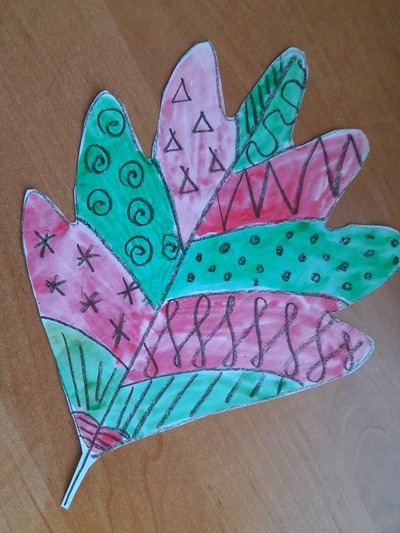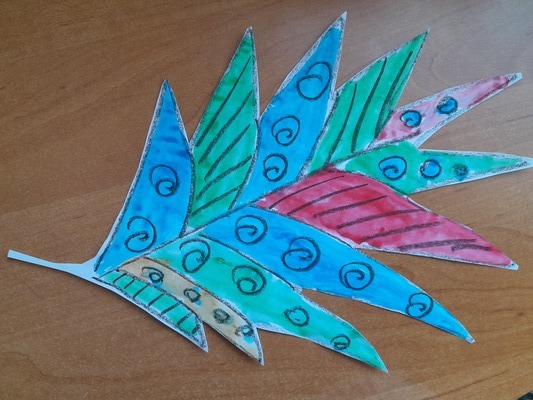
I found the photograph first but then it turned out that it is a whole post with a video tutorial, too. Have a look at the Art Projects for Kids! Which, by the way, is a cool website that I will be visiting in the future!
The language
This is the second module of our course and I decided that I need to start introducing some of the natural world vocabulary, in order to be a little bit better prepared to talk about the artists to come. The first introductory set is rather modest and it includes: the sky, the grass, trees, mountains, houses, the river, flowers and leaves. We have also used this module as an opportunity to revise colours and numbers and to introduce the first two adjectives (big and small). Finally, we started to talk about what ‘I like’ and ‘I don’t like’.

The artist
Our artist of the day who introduced all of that to us was Isaac Illich Levitan, the love of my childhood and my first artist ever. The album of his works is one of the very few books that I remember from my early childhood (apart from the storybooks, of course). It was there, on the shelf and I did spend hours on the carpet, leafing through it, back and forth, making up stories taking place among the birch trees, by the river, in the forests and in some ‘Sokolniki park’ which I found out about long before I set my foot in it. This, by the way, was also one of my first encounters with the foreing languages as the book was in Russian, English, French and German and these were my first exercises in comparative linguistics. At the age of 5 and 6.
Leviatan’s was what you might call a cameo appearance because I did not want to overwhelm the kids. We looked at the four seasons, looked for the new words in the paintings (‘Can you see a house?) and talked about the colours. We also started to sing ‘What’s your favourite season?’. Not a lot, but Isaac is definitely coming back, with the arrival of the winter and then the spring and the summer. With him, there will be Vivaldi, which would have been a perfect companion but I simply forgot about his existence. I am already looking forward to our winter-themed lessons.


The craft
- try to make the leaf at home to figure out how complex it might be and how much time we will require, think about the stages
- use the leaves throughout the lesson ie while revising colours and numbers or practising ‘I like / I don’t like’
- check that the kids have all the materials necessary: a piece of paper, crayons, watercolours and water
- draw the outline of the leaf veins, and patterns with crayons. It is ok to use the same colour but the final product is more interesting if different colours are used. I was considering introducing different patterns to make it more structured but, in the end, decided not to. We will introduce them on some other occasion, with Kandinsky, for example. If possible, I would use special paper for watercolours but in the online world it is not quite possible. Regular photocopying paper works well, too.
- colour the leaf with the watercolours. It might be a good idea to start with the brighter colours and, for the sake of staging, ‘dictate’ which colour to use, leaving the kids a decision which section of the leaf to colour. The lines drawn with crayons will not be covered by the paint and they will be still visible and it is not really necessary to be too careful with painting. Not staying within the lines or even letting the colours seep or even leak into each other create a much more interesting effect. I haven’t really encouraged my kids to create a very ‘messy-on-purpose’ picture (not yet, anyway) but I am very reckless with how I use my paints, to show the kids that it’s ok.
- finish with showing the leaves, call out the colours, talk about whose leaves we like.
- I have cut out my leaves to be able to use them more easily and I was planning on telling the parents that the kids can do it after the lesson, when the paints dry completely. If I still had my classroom, I would put them up on the window.

Happy teaching!